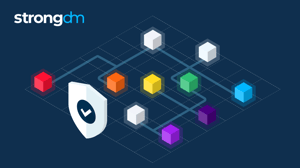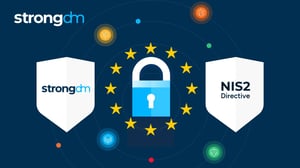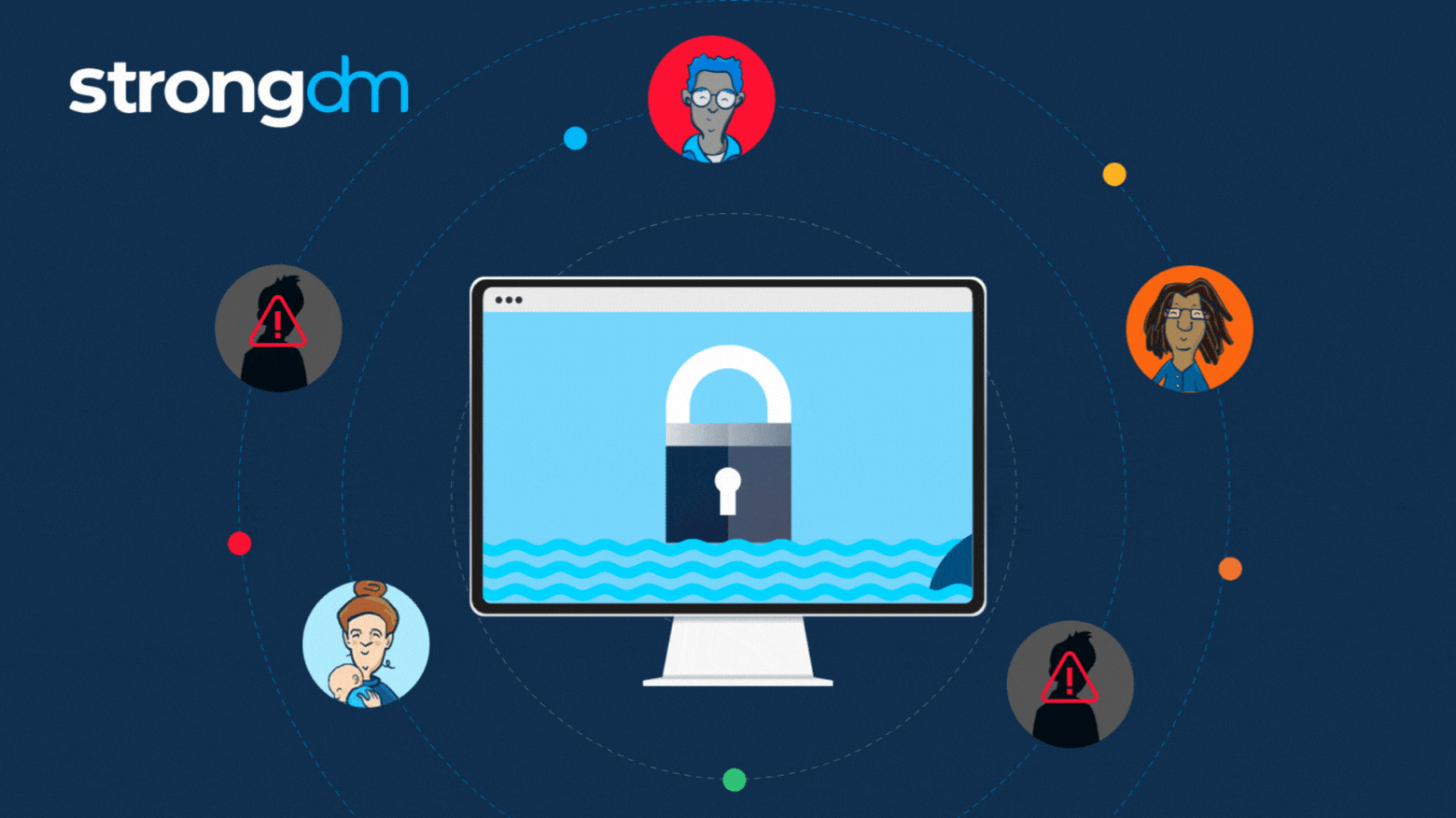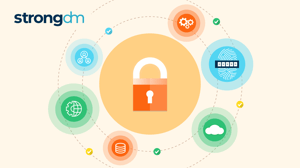
- Role-based, attribute-based, & just-in-time access to infrastructure
- Connect any person or service to any infrastructure, anywhere
- Logging like you've never seen
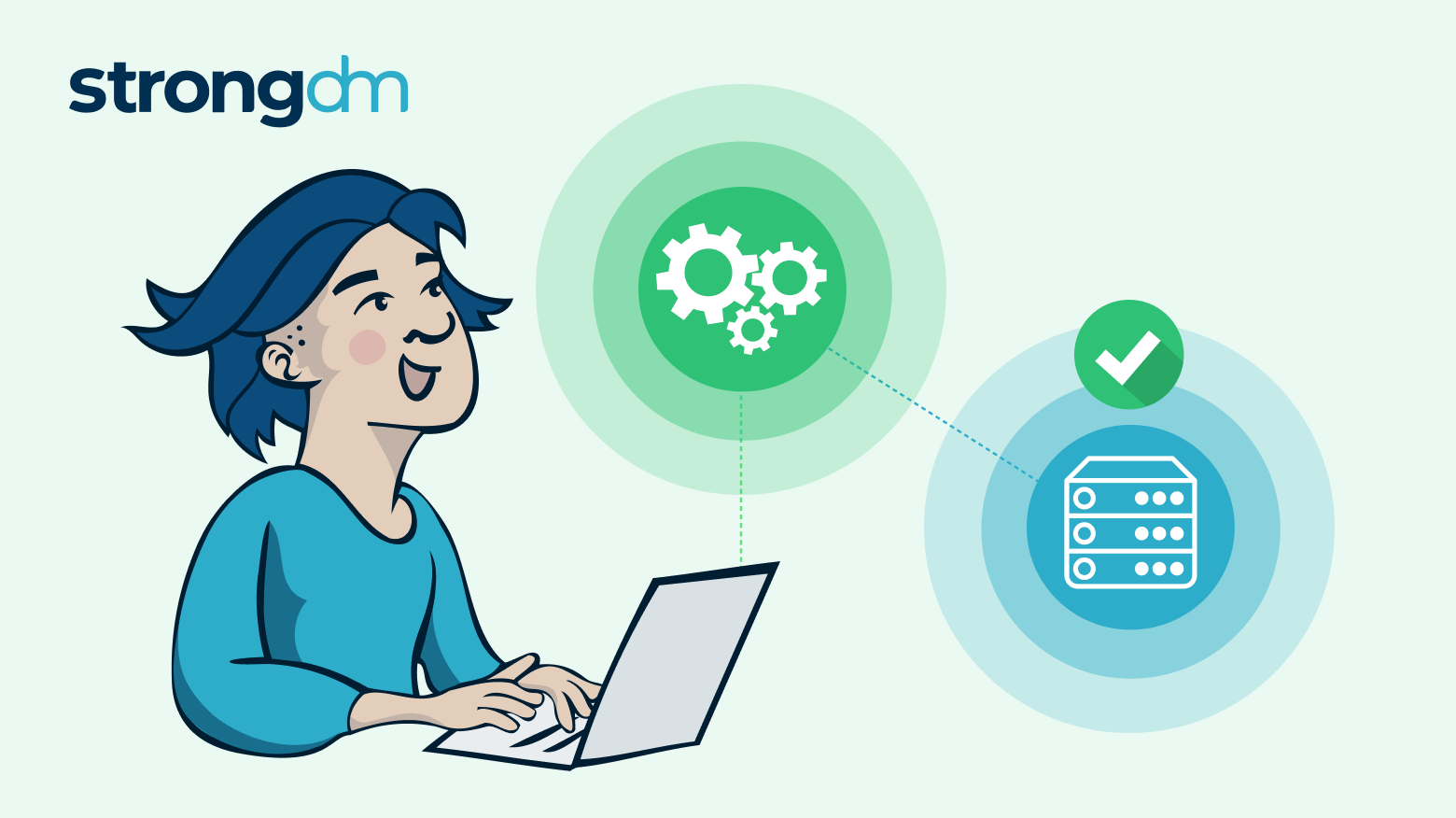
APIs (Application Programming Interfaces) connect different systems and allow them to communicate and share information. But just like all elements of your IT infrastructure, APIs are vulnerable to exploitation by malicious actors. With increasing reliance on them, it’s essential to know how to secure APIs to prioritize the safety of your application and user data.
Why API Security is Important
APIs act as a bridge between different systems, making them attractive entry points for attackers. Because developers tend to trust APIs, they are sometimes overlooked when implementing cybersecurity protocols. API security protects your application and user data from unauthorized access, data breaches, and potential cyber attacks.
Implementing robust API security best practices prevents unauthorized access, protects your organization's reputation, and ensures the trust and confidence of your users. Let’s look at 13 best practices that will keep your APIs on secure.
1. Strong Authentication Mechanisms
Strong authentication mechanisms remain your first line of defense in API security. Implement multi-factor authentication (MFA) and biometric authentication to significantly reduce the risk of unauthorized access to your APIs.
MFA adds an extra layer of security by requiring users to provide additional verification, such as a one-time password or biometric data, in addition to their username and password. Biometric authentication verifies users with unique biological traits that are difficult to duplicate, like fingerprint scans or facial recognition.
💡Make it easy: StrongDM's adaptive authentication goes beyond traditional API security best practices. StrongDM supports MFA, passwordless, and ephemeral credential initiatives using cloud-native authentication, remote identities, and time-limited credentials for simple, secure, cost-efficient authentication across environments.
2. Authorize with Least Privilege
The principle of least privilege (PoLP) — granting each user or system only the minimum permissions necessary to perform their intended tasks — reduces the potential damage caused by a compromised API. By limiting access rights, you reduce the risk of unauthorized actions, data breaches, and malicious activities.
💡Make it easy: StrongDM helps you enforce PoLP by implementing RBAC, ABAC, or PBAC for resources across your entire infrastructure. Reduce the attack surface even further by automating just-in-time access to your most sensitive infrastructure.
3. Implement Fine-Grained Access Control
Fine-grained access control (FGAC) lets you define and enforce specific access rules based on user roles, groups, or attributes. Granular access control ensures that only authorized users have access to specific API endpoints or resources, protecting you against privilege escalation attacks.
💡Make it easy: StrongDM’s Dynamic Access Management (DAM) platform with fine-grained access control (FGAC) capabilities allows precise control over user access to resources. FGAC relies on multiple factors, including the user and the context. StrongDM combines enhanced access security with compliance, productivity, and efficiency improvements.
4. Encrypt Data in Transit and at Rest
Encrypting data protects it from interception and unauthorized access. Encrypt all communication between your APIs and client applications using industry-standard protocols such as HTTPS/TLS. Additionally, encrypt sensitive data at rest, such as in databases or storage systems, to maintain security even if the underlying infrastructure is compromised.
💡Make it easy: StrongDM ensures end-to-end encryption across all supported protocols. This means that from the moment a user interacts with StrongDM's Admin UI, their connection is secured using robust encryption protocols, including TLS 1.2 and TLS 1.3. As the user's request traverses through the system, it maintains its encrypted state, with client-to-gateway connections utilizing TLS 1.2 and the gateway communicating securely with resources through the resource's native encryption method, such as TLS/SSL. Additionally, any data stored within Amazon Web Services (AWS) by StrongDM is safeguarded using AWS's native encryption methods, further ensuring the security and integrity of the data at rest.
5. Implement Rate Limiting and Throttling
Rate limiting and throttling protect your APIs from abuse, denial-of-service attacks, and brute force attacks. Rate limiting restricts the number of requests from a particular client or IP address within a specific time frame, while throttling limits the rate at which requests are processed. These measures help ensure the availability and stability of your APIs while preventing malicious activities.
💡Make it easy: StrongDM's rate-limiting features allow normal use while mitigating traffic from malicious actors. Individual users, including API keys and admin tokens, are limited to up to 5,000 read requests and 500 write requests per minute. Actions taken within an organization are limited to 150,000 read requests and 15,000 write requests.
6. Use an API Gateway
An API gateway acts as a centralized entry point for all API requests, providing a layer of security and control. It simplifies API management and enhances security across your entire API landscape by enforcing security policies, handling authentication and authorization, performing request validation, and providing additional security features such as logging and monitoring.
💡Make it easy: StrongDM seamlessly integrates with popular API gateways, which decrypt credentials on behalf of end users and serve as the client’s entry point into the rest of the StrongDM network.
7. Logging and Monitoring
Implementing robust logging and monitoring practices lets you promptly detect and respond to security incidents. By logging API requests, responses, and errors, you can track and analyze usage patterns and identify potential security issues. Real-time monitoring helps spot suspicious activities, abnormal behavior, and potential security breaches. Monitoring and logging help maintain the integrity and security of your APIs.
💡Make it easy: StrongDM’s logging and monitoring features support API security best practices by logging every activity and query across all resources providing comprehensive tracking and alerting you to anomalous activity.
8. Regular Security Audits and Penetration Testing
Conducting regular security audits and penetration testing identifies vulnerabilities and weaknesses in your API security. Security audits comprehensively review your API infrastructure, configurations, access controls, and security policies, while penetration testing simulates real-world attacks to identify vulnerabilities and potential entry points for attackers. By performing these tests regularly, you can proactively address security issues and ensure the robustness of your API security.
💡Make it easy: StrongDM's detailed access logs aid in security audits by providing centralized visibility and logging and automating evidence collection for fast, auditable access. You maintain full control of your logs and develop a clear picture of access risk.
9. API Lifecycle Management
Manage APIs from inception to retirement by defining API specifications, versioning, documenting, testing, deploying, and retiring APIs. Implementing a structured API lifecycle management process ensures that you incorporate security measures from the early stages of development and throughout the entire lifecycle.
💡Make it easy: StrongDM facilitates access management throughout the entire API lifecycle by managing access to all your infrastructure and managed resources from a single platform.
10. Patch and Update Regularly
Regularly patching and updating your API infrastructure protects against known vulnerabilities and security risks. Keep track of security advisories and updates from vendors and promptly apply patches and updates to your API components.
💡Make it easy: StrongDM ensures smooth updates without disrupting operations by enabling you to set maintenance windows for gateways and relays to control the time of day when upgrades happen. Additionally, StrongDM’s real-time monitoring and alerting capabilities allow administrators to detect any issues or anomalies as they occur.
11. Educate Development Teams
Following API security best practices involves the entire development team. It is essential to educate your developers about how to secure APIs, use secure coding techniques, and spot potential vulnerabilities. Provide regular training sessions, workshops, and resources to keep them updated with the latest security trends and practices. Fostering a culture of security awareness ingrains these practices into the development process from day one.
💡Make it easy: StrongDM provides educational resources for development teams through events, podcasts, webinars, product documentation, and solution guides.
12. Implement Content Validation
Validate the data sent to and received from your APIs by implementing strict validation mechanisms that ensure the data conforms to the expected format, structure, and content. This helps prevent common security vulnerabilities such as SQL injection, cross-site scripting (XSS), and XML External Entity (XXE) attacks. It also significantly reduces the risk of data corruption, injection attacks, and other security vulnerabilities.
💡Make it easy: StrongDM has granular permission management to enforce least-privilege access to network resources to protect data integrity. StrongDM’s privileged access control to sensitive information also provides security teams with comprehensive observability by integrating resource event and user activity data into one central interface.
13. Secure Third-Party Integrations
Third-party integrations can introduce additional security risks to your APIs. Thoroughly evaluate your third-party provider’s reputation and security practices before integrating with external services or APIs. Ensure that they follow industry-standard security protocols, have robust authentication and authorization mechanisms, and regularly update and patch their systems.
💡Make it easy: StrongDM supports your third-party integrations with robust controls so you can securely use the services and tools that you love.
StrongDM is the Comprehensive Solution for Securing APIs
Knowing how to secure APIs involves following security best practices to protect your application and user data. Robust API security best practices help safeguard your APIs from unauthorized access, data breaches, and cyber attacks. Ensure the security of your APIs with multiple layers of security such as authentication mechanisms, PoLP access control, data protection and encryption, rate limiting, and continuous monitoring and improvement.
StrongDM is your solution for implementing API security best practices. With StrongDM’s dynamic access management (DAM), your APIs remain secure across your entire technical stack, while providing your technical teams with access to what they need when they need it.
Learn more about controlling access to your resources with a demo of StrongDM today.
About the Author
Fazila Malik, Product Marketing Manager, an accomplished product marketing manager with over 5 years of experience in the technology industry. She is skilled at developing comprehensive product marketing plans that encompass messaging, positioning, and go-to-market strategies. Throughout her career, Fazila has worked with technology products including software applications and cloud-based solutions. She is constantly seeking to improve her skills and knowledge through ongoing training and professional development. She is a member of the Product Marketing Alliance and is an AWS Cloud Certified Practitioner. To contact Fazila, visit her on LinkedIn.

You May Also Like
